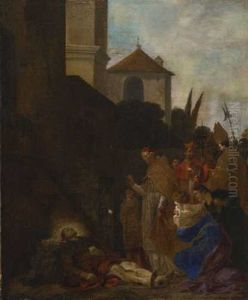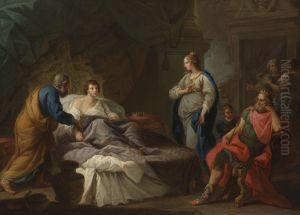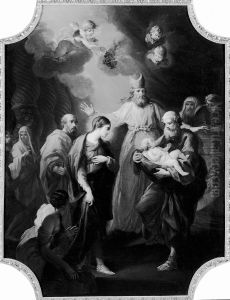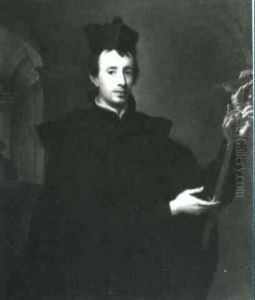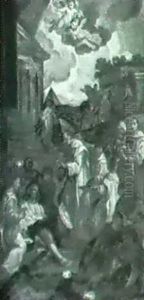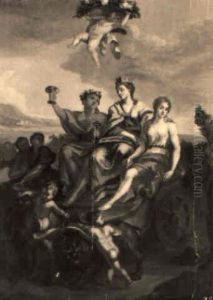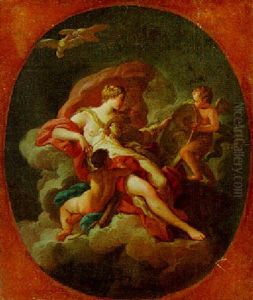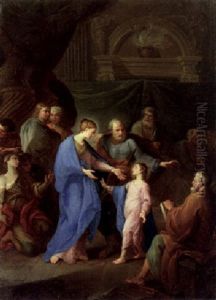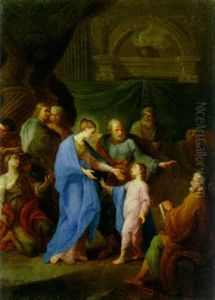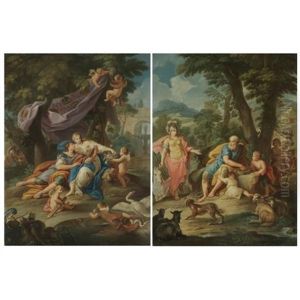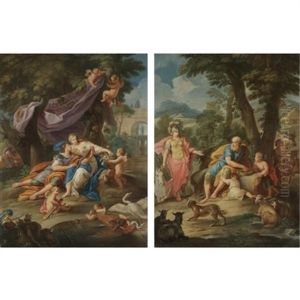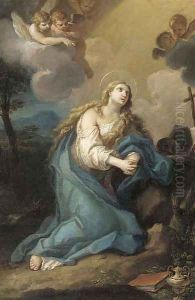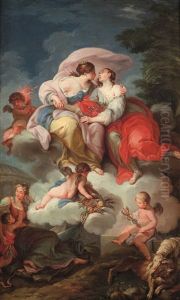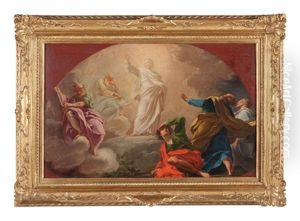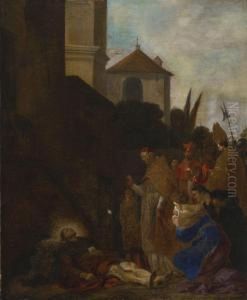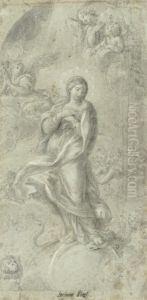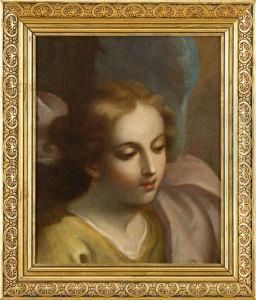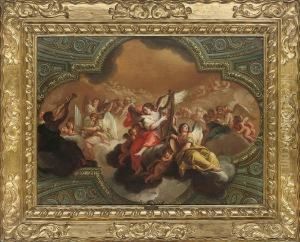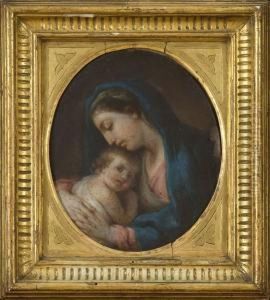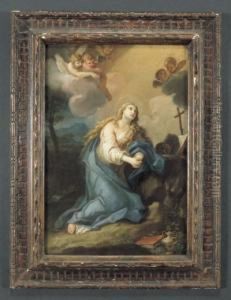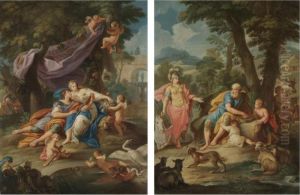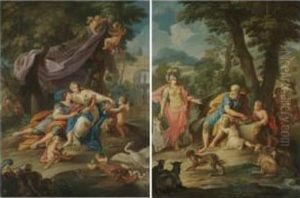Stefano Pozzi Paintings
Stefano Pozzi was an Italian painter, architect, and decorator, known for his work in the late Baroque and early Rococo periods. Born in 1699 in Rome, Italy, he was part of a family of artists and architects, which undoubtedly influenced his decision to pursue a career in the arts. His father, Giovanni Battista Pozzi, was an architect, and his brother, Pier Leone Pozzi, was also an architect and painter. This familial environment fostered his artistic development from an early age.
Pozzi trained under the tutelage of notable artists such as Benedetto Luti and Francesco Trevisani. These mentors were instrumental in shaping Pozzi's style, which combined the grandeur of the Roman Baroque with the lighter, more playful elements that would come to characterize the Rococo. He became particularly well-regarded for his fresco works, which often featured religious and mythological scenes imbued with a sense of dynamism and movement.
Throughout his career, Stefano Pozzi worked on various important commissions, particularly in decorating churches and palaces. His works can be found in locations such as the church of San Silvestro in Capite and the Palazzo Doria-Pamphilj in Rome. His expertise extended beyond painting, as he was also involved in designing stage sets for theatrical productions, reflecting the broader cultural milieu of 18th-century Rome, where the arts were flourishing.
In addition to his frescoes and set designs, Pozzi also produced a number of easel paintings and was a respected draughtsman. His drawings, characterized by their precision and clarity, were highly sought after by collectors during his lifetime and served as preparatory studies for his larger works.
Pozzi's influence extended through his teaching as well. He was a member of the prestigious Accademia di San Luca in Rome, an institution dedicated to promoting the arts and providing education to young artists. Through his association with the Accademia, Pozzi played a role in nurturing the next generation of Italian artists.
Stefano Pozzi passed away in 1768 in Rome, leaving behind a legacy of work that exemplified the transition from the Baroque to the Rococo. His contributions to Italian art were significant, as they reflected the changing tastes and artistic sensibilities of his time.
